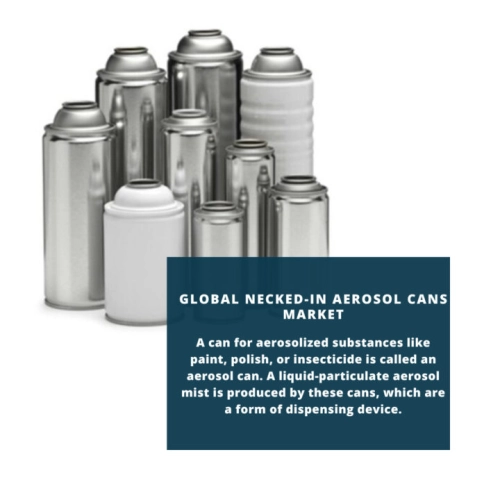
- Get in Touch with Us

Last Updated: Apr 25, 2025 | Study Period: 2022-2030
A can for aerosolized substances like paint, polish, or insecticide is called an aerosol can. A liquid-particulate aerosol mist is produced by these cans, which are a form of dispensing device.
Aluminum is steadily gaining market share as it protects against air, humidity, light, viruses, and other gases. Aerosol cans are often made of aluminium or steel.
Additionally, it is made of a corrosion-resistant polymer that shields the cans' contents from deterioration. The most common fuels for aerosol propellants are carbon dioxide, butane, and propane.
These cans are utilised for more than just their intended purpose; in addition to their large printing surface area and ability to provide 360-degree billboards for businesses, they are also used as promotional products.
These aerosol containers provide a graphic solution. In today's cutthroat marketplace, these aerosol cans provide a graphics option that includes matte, shiny, high-gloss, pearlescent, and hot stamping.
Aerosol cans are practical packaging options that offer the consumer all the benefits of excellent performance during storage and transport. There are several types of aerosol cans created, and they are typically made of materials that can safely transport pressurized liquids and gases.

The Global Necked-In Aerosol Cans market accounted for $XX Billion in 2021 and is anticipated to reach $XX Billion by 2030, registering a CAGR of XX% from 2022 to 2030.
The market for Necked-In Aerosol Cans has been adversely affected by the Covid-19 epidemic. involving the industry. Due to the lockdown and societal conventions of distance, major corporations have temporarily ceased operations in many regions.
| Sl no | Topic |
| 1 | Market Segmentation |
| 2 | Scope of the report |
| 3 | Abbreviations |
| 4 | Research Methodology |
| 5 | Executive Summary |
| 6 | Introduction |
| 7 | Insights from Industry stakeholders |
| 8 | Cost breakdown of Product by sub-components and average profit margin |
| 9 | Disruptive innovation in the Industry |
| 10 | Technology trends in the Industry |
| 11 | Consumer trends in the industry |
| 12 | Recent Production Milestones |
| 13 | Component Manufacturing in US, EU and China |
| 14 | COVID-19 impact on overall market |
| 15 | COVID-19 impact on Production of components |
| 16 | COVID-19 impact on Point of sale |
| 17 | Market Segmentation, Dynamics and Forecast by Geography, 2022-2030 |
| 18 | Market Segmentation, Dynamics and Forecast by Product Type, 2022-2030 |
| 19 | Market Segmentation, Dynamics and Forecast by Application, 2022-2030 |
| 20 | Market Segmentation, Dynamics and Forecast by End use, 2022-2030 |
| 21 | Product installation rate by OEM, 2022 |
| 22 | Incline/Decline in Average B-2-B selling price in past 5 years |
| 23 | Competition from substitute products |
| 24 | Gross margin and average profitability of suppliers |
| 25 | New product development in past 12 months |
| 26 | M&A in past 12 months |
| 27 | Growth strategy of leading players |
| 28 | Market share of vendors, 2022 |
| 29 | Company Profiles |
| 30 | Unmet needs and opportunity for new suppliers |
| 31 | Conclusion |
| 32 | Appendix |